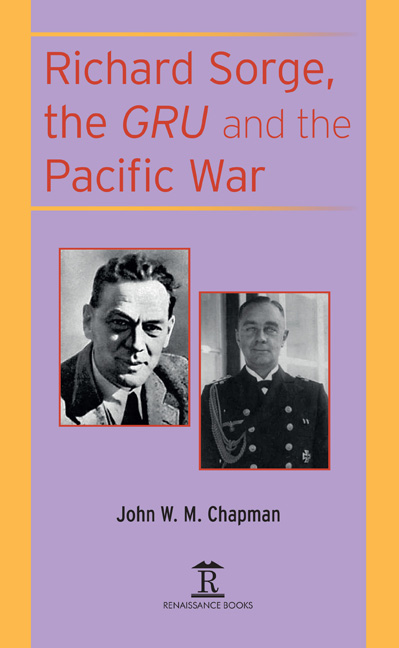Book contents
- Frontmatter
- Contents
- Chart: Organization of the People’s Commisariat for the Defence of the USSR,1941
- Preface
- Introduction
- Abbreviations
- List of Illustrations
- 1 ‘All is Not Well in the Camp of the Axis Powers’: Karl von Wiegand to Hearst Press, 20 November 1941
- 2 ‘In the Matter Affecting Ambassador Ott’
- 3 The Purge of German Journalists
- 4 ‘Expressions which are Psychologically Dangerous’: General Jodl to Admiral Wenneker 24.12.1942
- 5 The Bifurcation of Intelligence in Retrospect, 1929–1937
- 6 The Bifurcation of Intelligence in Retrospect, 1937–1941
- 7 Conclusions
- Select Bibliography
- Source Materials
- Index of Persons
- Index
- List of Contributors
6 - The Bifurcation of Intelligence in Retrospect, 1937–1941
- Frontmatter
- Contents
- Chart: Organization of the People’s Commisariat for the Defence of the USSR,1941
- Preface
- Introduction
- Abbreviations
- List of Illustrations
- 1 ‘All is Not Well in the Camp of the Axis Powers’: Karl von Wiegand to Hearst Press, 20 November 1941
- 2 ‘In the Matter Affecting Ambassador Ott’
- 3 The Purge of German Journalists
- 4 ‘Expressions which are Psychologically Dangerous’: General Jodl to Admiral Wenneker 24.12.1942
- 5 The Bifurcation of Intelligence in Retrospect, 1929–1937
- 6 The Bifurcation of Intelligence in Retrospect, 1937–1941
- 7 Conclusions
- Select Bibliography
- Source Materials
- Index of Persons
- Index
- List of Contributors
Summary
IN DECEMBER 1936, Wenneker requested permission to pay a visit to Shanghai. But it is uncertain if this was allowed, though he paid a visit to the Yasukuni Shrine with Ambassador von Dirksen at the time of his farewell in July 1937. He returned home to be appointed captain of the so-called ‘pocket battleship’ Deutschland which saw service in the Mediterranean and provided support for Axis forces intervening in the Spanish Civil War. At this time, he made contact once more with Commander Ross serving with the British Mediterranean Fleet. But no record survives of any contact with Japanese Navy officers in Europe nor is there any evidence of contact between Wenneker and Sorge after departing from Japan at the end of his first tour of duty there. There is evidence, however, of the early establishment by Wenneker of the secret Supply Area in Japan and China (Etappe Japan) organised by a section of the Abwehr, which worked closely with the Foreign Ministry to establish arrangements for the logistical supply of and assistance to German merchant ships in the event of the development of international crises or the outbreak of war.
In his first tour, however, Wenneker primarily sought to develop contacts with members of the German business community in East Asia involving the shipping industry and providing support from time to time for German cruisers despatched on voyages round the world mainly for training purposes. Although such contacts had been pursued by the German Navy since about 1926, questions of naval intelligence had remained mainly matters of concern about international developments in Europe, but only began to have any relevance for East Asia from the time of the Ethiopian Crisis in the winter of 1935, when younger Japanese Navy officers began to urge their leaders that such European distractions provided encouragement for the expansion of Japanese influence in South-East Asia.
As Hitler's commitment to rearmament and to seeking to exploit anti-Communist and anti-Soviet sentiment in neighbouring states became increasingly evident, it was followed by a growing manifestation of friction and hostility towards those who were unprepared to make common cause against the USSR.
- Type
- Chapter
- Information
- Richard Sorge, the GRU and the Pacific War , pp. 74 - 102Publisher: Amsterdam University PressPrint publication year: 2020

